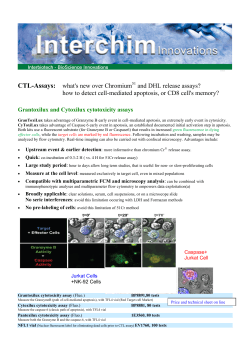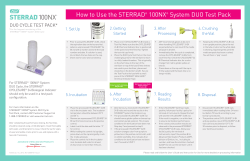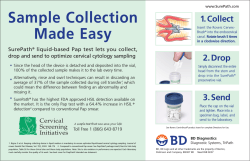
Hyoscyamine Sulfate Tablets Hypromellose
Accessed from 10.6.1.1 by correct6 on Tue Apr 28 15:43:51 EDT 2015 3296 Hyoscyamine / Official Monographs H2SO4 · 2H2O] in each mL of the Oral Solution taken by the formula: 100 × 1.053 × (C/V)(rU / rS) in which 1.053 is the ratio of the molecular weight of hydrated hyoscyamine sulfate to that of anhydrous hyoscyamine sulfate; C is defined under Standard preparation; V is the volume, in mL, of Oral Solution taken; and rU and rS are the peak responses obtained from the Assay preparation and the Standard preparation, respectively. Hyoscyamine Sulfate Tablets USP 37 ure the area responses for the major peaks. Calculate the quantity, in mg, of hyoscyamine sulfate [(C17H23NO3)2 · H2SO4 · 2H2O] in the portion of Tablets taken by the formula: 25 × 1.053 × C(rU / rS) in which 1.053 is the ratio of the molecular weight of hydrated hyoscyamine sulfate to that of anhydrous hyoscyamine sulfate; C is as defined under Standard preparation; and rU and rS are the peak responses obtained from the Assay preparation and the Standard preparation, respectively. USP Monographs . . Hypromellose » Hyoscyamine Sulfate Tablets contain not less than 90.0 percent and not more than 110.0 percent of the labeled amount of hyoscyamine sulfate [(C17H23NO3)2 · H2SO4 · 2H2O]. Portions of this monograph that are national USP text, and are not part of the harmonized text, are marked with symbols (◆◆) to specify this fact. Cellulose, 2-hydroxypropyl methyl ether; Cellulose hydroxypropyl methyl ether [9004-65-3]. Packaging and storage—Preserve in tight, light-resistant containers. USP Reference standards 〈11〉— USP Hyoscyamine Sulfate RS Identification— A: The retention time of the major peak in the chromatogram of the Assay preparation corresponds to that in the chromatogram of the Standard preparation, as obtained in the Assay. B: A filtered solution of Tablets meets the requirements of the tests for Sulfate 〈191〉. Disintegration 〈701〉: 15 minutes. Uniformity of dosage units 〈905〉: meet the requirements. Assay— Diluent, Buffer solution, Mobile phase, Standard stock preparation, and Standard preparation—Proceed as directed in the Assay under Hyoscyamine Sulfate Injection. Tropic acid solution—Dissolve an accurately weighed quantity of tropic acid in Diluent to obtain a solution having a concentration of about 3 µg of tropic acid per mL. System suitability preparation—Transfer 3.0 mL of the Standard stock preparation into a 100-mL volumetric flask, add 4.0 mL of the Tropic acid solution, dilute with Diluent, to volume and mix. Assay preparation—Weigh and finely powder not fewer than 20 Tablets. Transfer an accurately weighed quantity of the powder, equivalent to about 0.125 mg of hyoscyamine sulfate, to a 25-mL volumetric flask. Add about 20 mL of the Diluent, and sonicate for 15 minutes with occasional swirling. Allow to cool to room temperature, dilute with Diluent to volume, and mix. Pass an aliquot through a 0.45µm filter, discarding the first 5 mL of the filtrate. Chromatographic system—The liquid chromatograph is equipped with a 205-nm detector and a 4.6-mm × 15-cm column that contains 4-µm packing L11 and a 3-mm × 4-mm guard column that contains packing L11. The flow rate is about 1.0 mL per minute. The column temperature is maintained at 30°. Chromatograph the System suitability preparation, and record the peak responses as directed for Procedure: the elution order is the tropic acid peak, followed by the hyoscyamine peak; the resolution, R, between tropic acid and hyoscyamine is not less than 1.5; the tailing factor for the hyoscyamine peak is not more than 1.8; and the relative standard deviation for six replicate injections is not more than 2.0%. Procedure—Separately inject equal volumes (about 50 µL) of the Standard preparation and the Assay preparation into the chromatograph, record the chromatograms, and meas- DEFINITION Hypromellose is a methyl and hydroxypropyl mixed ether of cellulose. It contains, calculated on the dried basis, methoxy (–OCH3: 31.03) and hydroxypropoxy (–OC3H6OH: 75.09) groups conforming to the limits for the types of Hypromellose (hydroxypropyl methylcellulose) set forth in the table below. . Methoxy (%) Substitution Type 1828 2208 2906 2910 Min. 16.5 19.0 27.0 28.0 Max. 20.0 24.0 30.0 30.0 Hydroxypropoxy (%) Min. 23.0 4.0 4.0 7.0 Max. 32.0 12.0 7.5 12.0 IDENTIFICATION • A. Sample: 1 g Analysis: Gently add the Sample to the top of 100 mL of water in a beaker, and allow to disperse over the surface, tapping the top of the container to ensure an even dispersion of the substance. Allow the beaker to stand for 1–2 min. Acceptance criteria: The powdered material aggregates on the surface. • B. Sample: 1 g Analysis: Add the Sample to 100 mL of boiling water, and stir the mixture using a magnetic stirrer with a bar 25 mm long. Acceptance criteria: A slurry is formed, but the powdered material does not dissolve. Cool the slurry to 10°, and stir using a magnetic stirrer: the resulting liquid is a clear or slightly turbid solution with thickness dependent on the viscosity grade. • C. Solution A: Sulfuric acid and water (9 in 10). [NOTE— Carefully add sulfuric acid to water.] Sample solution: 0.1 mL of the solution prepared for Identification test B Analysis: To the Sample solution, add 9 mL of Solution A, and shake. Heat in a water bath for exactly 3 min, immediately cool in an ice bath, and add carefully 0.6 mL of ninhydrin TS. Shake, and allow to stand at 25°. Acceptance criteria: A red color develops at first that changes to purple within 100 min. Official from December 1, 2014 Copyright (c) 2015 The United States Pharmacopeial Convention. All rights reserved. Accessed from 10.6.1.1 by correct6 on Tue Apr 28 15:43:51 EDT 2015 USP 37 Official Monographs / Hypromellose 3297 • D. Sample solution: 2–3 mL of the solution prepared for Identification test B Analysis: Pour the Sample solution onto a glass slide as a thin film, and allow the water to evaporate. Acceptance criteria: A coherent, clear film forms on the glass slide. • E. Sample solution: 50 mL of the solution prepared in Identification test B Analysis: Add the Sample solution to exactly 50 mL of water in a beaker. Insert a thermometer into the solution. Stir the solution on a magnetic stirrer/hot plate, and begin heating at a rate of 2°–5°/min. Determine the temperature at which a turbidity increase begins to occur, and designate this temperature as the flocculation temperature. Acceptance criteria: The flocculation temperature is higher than 50°. ASSAY Change to read: . Result = 21.864 × (RUa/RSa) × (WSa/WU) RUa = peak area ratio of methyl iodide to n-octane from the Sample solution RSa = peak area ratio of methyl iodide to n-octane from the Standard solution WSa = weight of methyl iodide in the Standard solution (mg) WU = weight of Hypromellose, calculated on the dried basis, taken for the Sample solution (mg) Calculate the percentage of hydroxypropoxy (–OC3H6OH) in the portion of Hypromellose taken: Result = 44.17 × (RUb/RSb) × (WSb/WU) RUb = peak area ratio of isopropyl iodide to n-octane from the Sample solution RSb = peak area ratio of isopropyl iodide to n-octane from the Standard solution WSb = weight of isopropyl iodide in the Standard solution (mg) WU = weight of Hypromellose, calculated on the dried basis, taken for the Sample solution (mg) Acceptance criteria: See the limits, calculated on the dried basis, in the table in the Definition. IMPURITIES • RESIDUE ON IGNITION 〈281〉 Sample: 1.0 g Acceptance criteria: NMT 1.5% Change to read: • HEAVY METALS, Method III 〈231〉 Analysis: ▲Method III is followed with the following exception. For the Standard Preparation, the addition of 2.0 mL of the Standard Lead Solution is transferred before heating instead of following heating.▲USP37 Acceptance criteria: NMT 20 ppm . Official from December 1, 2014 Copyright (c) 2015 The United States Pharmacopeial Convention. All rights reserved. USP Monographs • PROCEDURE [CAUTION—Hydriodic acid and its reaction byproducts are highly toxic. Perform all steps in the preparation of the Standard solution and the Sample solution in a properly functioning hood. Specific safety practices to be followed are to be identified to the analyst performing this test.] Apparatus: For the reaction vial, use a 5-mL pressuretight serum vial, 50 mm in height, 20 mm in outside diameter, and 13 mm in inside diameter at the mouth. The vial is equipped with a pressure-tight septum having a polytetrafluoroethylene-faced butyl rubber and an airtight seal using an aluminum crimp or any sealing system that provides sufficient airtightness. Use a heater having a heating module that has a square-shaped aluminum block with holes 20 mm in diameter and 32 mm in depth, into which the reaction vial fits. The heating module is also equipped with a magnetic stirrer capable of mixing the contents of the vial, or use a reciprocal shaker that performs a reciprocating motion of about 100 times/min. Hydriodic acid: Use a reagent having a typical concentration of HI of about 57%. Internal standard solution: 30 mg/mL of n-octane in o-xylene Standard solution: Into a suitable serum vial, weigh between 60 and 100 mg of adipic acid, and add 2.0 mL of Hydriodic acid and 2.0 mL of Internal standard solution. Close the vial securely with a suitable septum stopper. Weigh the vial and contents, add between 15 µL and 22 µL of isopropyl iodide through the septum with a syringe, weigh again, and calculate the weight of isopropyl iodide added, by difference. Add 45 µL of methyl iodide similarly, weigh again, and calculate the weight of methyl iodide added, by difference. Shake the reaction vial well, and allow the layers to separate. Use the upper layer as the Standard solution. Sample solution: Transfer 0.065 g of dried Hypromellose to a 5-mL thick-walled reaction vial equipped with a pressure-tight septum-type closure, add between 60 and 100 mg of adipic acid, and pipet 2.0 mL of Internal standard solution into the vial. Cautiously pipet 2.0 mL of Hydriodic acid into the mixture, immediately cap the vial tightly, and weigh. Using the magnetic stirrer equipped in the heating module, or using a reciprocal shaker, mix the contents of the vial continuously, heating and maintaining the temperature of the contents at 130 ± 2° for 60 min. If a reciprocal shaker or magnetic stirrer cannot be used, shake the vial well by hand at 5-min intervals during the initial 30 min of the heating time. Allow the vial to cool, and weigh. If the weight loss is ≥0.50% of the contents or there is evidence of a leak, discard the mixture, and prepare another Sample solution. Chromatographic system (See Chromatography 〈621〉, System Suitability.) Mode: GC Detector: Thermal conductivity or hydrogen flameionization Column: 3- to 4-mm × 1.8- to 3-m glass; packed with 20% liquid phase ▲G1▲USP37 on 100- to 120-mesh support S1D that is not silanized.[NOTE—Use a column giving well-resolved peaks of methyl iodide, isopropyl iodide, and the internal standard, in that order.] Column temperature: 100° Carrier gas: Use helium with the thermal conductivity detector; helium or nitrogen can be used for the hydrogen flame-ionization detector. Flow rate: With the Standard solution, adjust the flow rate so that the retention time of the internal standard is about 10 min. Injection volume: 1–2 µL Analysis Samples: Upper layer of the Standard solution and the Sample solution Calculate the percentage of methoxy (–OCH3) in the portion of Hypromellose taken: Accessed from 10.6.1.1 by correct6 on Tue Apr 28 15:43:51 EDT 2015 3298 Hypromellose / Official Monographs USP 37 SPECIFIC TESTS Table 1 Labeled Viscositya Change to read: (mPa · s) 600 or more and less than 1400 1400 or more and less than 3500 3500 or more and less than 9500 9500 or more and less than 99,500 99,500 or more • PH 〈791〉 Sample: Use the solution prepared in the tests for Viscosity. ▲▲USP37 Analysis: Read the indicated pH value after the probe has been immersed for 5 ± 0.5 min. Acceptance criteria: 5.0–8.0 • LOSS ON DRYING 〈731〉 Sample: 1.0 g Analysis: Dry the Sample at 105° for 1 h. Acceptance criteria: NMT 5.0% . a . Rotor No. Revolution (rpm) Calculation Multiplier 3 60 20 3 12 100 4 60 100 4 4 6 3 1000 2000 The Labeled Viscosity is based on the manufacturer’s specifications. Allow the spindle to rotate for 2 min before taking the measurement. Allow a rest period of ▲at least▲USP37 2 min between subsequent measurements. Repeat the operation twice to rotate the spindle as specified above, and average the three readings. Acceptance criteria: 75%–140% of the viscosity stated on the label Change to read: USP Monographs . . • VISCOSITY—CAPILLARY VISCOMETER METHODS 〈911〉 and ROTATIONAL RHEOMETER METHODS 〈912〉 Method 1: This method is applied to hypromellose samples having a viscosity type of less than 600 mPa · s. Sample solution: Transfer a quantity of Hypromellose equivalent to 4 g of solids, calculated on the dried basis, to a tared, wide-mouth centrifuge bottle. Add hot water to obtain a total weight of the sample and water of 200.0 g. Capping the bottle, stir by mechanical means at 400 ± 50 rpm for 10–20 min until the particles are thoroughly dispersed and wetted out. Scrape down the walls of the bottle with a spatula, if necessary, to ensure that there is no undissolved material on the sides of the bottle, and continue the stirring in a cooling water bath equilibrated at a temperature below 10° for another 20–40 min. Adjust the solution weight, if necessary, to 200.0 g, using cold water. Centrifuge the solution, if necessary, to expel any entrapped air. If any foam is present, remove with a spatula. Analysis: Determine the viscosity at 20 ± 0.1° in a suitable viscometer of the Ubbelohde type as directed in Viscosity—Capillary Viscometer Methods 〈911〉. Acceptance criteria: 80%–120% of the viscosity stated on the label Method 2: This method is applied to hypromellose samples having a viscosity type of 600 mPa · s or higher. Sample solution: Transfer a quantity of Hypromellose equivalent to 10 g of solids, calculated on the dried basis, to a tared, wide-mouth centrifuge bottle, and add hot water to obtain a total weight of the sample and water of 500.0 g. Capping the bottle, stir by mechanical means at 400 ± 50 rpm for 10–20 min until the particles are thoroughly dispersed and wetted out. Scrape down the walls of the bottle with a spatula, if necessary, to ensure that there is no undissolved material on the sides of the bottle, and continue the stirring in a cooling water bath equilibrated at a temperature below 10° for another 20–40 min. Adjust the solution weight, if necessary, to 500.0 g, using cold water. Centrifuge the solution, if necessary, to expel any entrapped air. If any foam is present, remove with a spatula. Analysis: Equip a suitable single-cylinder type rotational viscometer (Brookfield type LV Model, or equivalent), and determine the viscosity of this solution at 20 ± 0.1° under the operating conditions specified in Table 1. ADDITIONAL REQUIREMENTS Change to read: • ▲USP37 PACKAGING AND STORAGE: Preserve in well-closed containers. No storage requirements are specified.▲◆▲USP37 • LABELING: Label it to indicate its substitution type and its nominal viscosity value in millipascals per second (mPa · s). ▲◆ . . . Hypromellose Ophthalmic Solution . » Hypromellose Ophthalmic Solution is a sterile solution of Hypromellose. It contains not less than 85.0 percent and not more than 115.0 percent of the labeled amount of Hypromellose (hydroxypropyl methylcellulose). It may contain suitable antimicrobial, buffering, and stabilizing agents. Packaging and storage—Preserve in tight containers. USP Reference standards 〈11〉— USP Hypromellose RS Identification— A: Pour a few mL of Ophthalmic Solution onto a glass plate, and allow the water to evaporate: a thin, self-sustaining film results. B: Heat 5 mL of Ophthalmic Solution in a test tube over a low flame: the warm solution turns cloudy but clears upon chilling. Sterility 〈71〉: meets the requirements. pH 〈791〉: between 6.0 and 7.8. Assay— Standard preparation—Dissolve a suitable quantity of USP Hypromellose RS, accurately weighed, in water, and dilute quantitatively with water to obtain a solution having a known concentration of about 100 µg per mL. Assay preparation—Dilute an accurately measured volume of Ophthalmic Solution quantitatively with water to obtain a solution having an equivalent concentration of about 100 µg of hypromellose per mL. Procedure—Pipet 2 mL each of the Standard preparation, the Assay preparation, and water to provide a blank, into Official from December 1, 2014 Copyright (c) 2015 The United States Pharmacopeial Convention. All rights reserved.
© Copyright 2025









